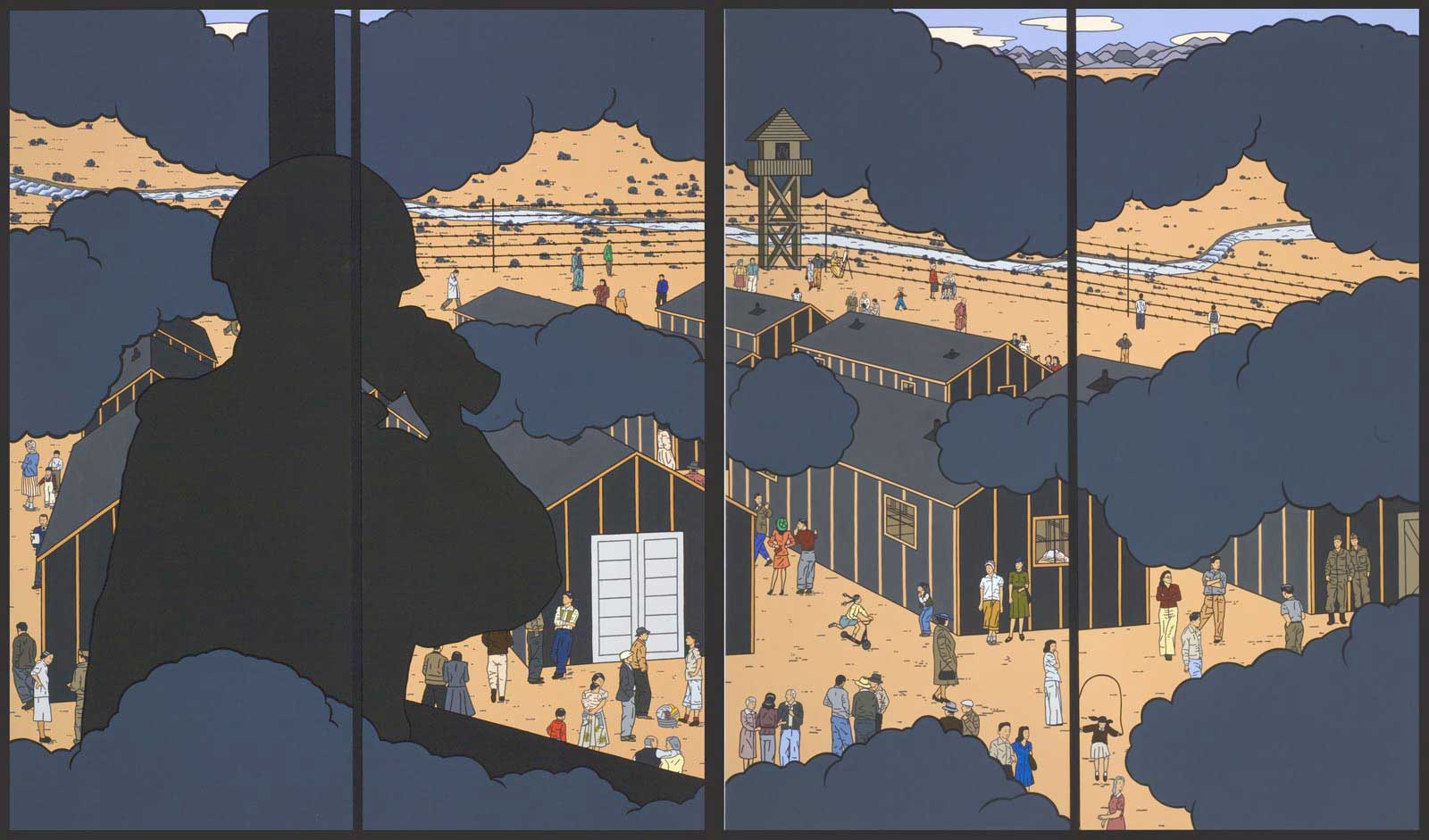American Infamy
7:00 PM |
| Roger Shimomura, American Infamy, 2007 |
At our core, we are just people, regardless of our skin tone, ethnicity, or culture.
Roger Shimomura spent a considerable chunk of his childhood sitting within the confines of the Minidoka internment camp in Idaho. There, Japanese-Americans lived out their lives as best they could, boxed in by barbed wire and watched by soldiers. Their housing quarters were less than sanitary, and their food practically inedible. Many of the internees had mentally removed themselves from their home country entirely, so the prospect at being held hostage because of their ethnicity naturally came as a huge betrayal. Still, despite the inhabitable nature of the internment camps, very few skirmishes were had overall.
American Infamy depicts a shadowy, anonymous soldier watching over the community of Japanese-Americans. Unlike the edgy, anti-Japanese caricatures that Shimomura often reprises from the past, the people below are, for the most part, a normal community of people. There’s no fishy business to be had and no spies in sight (except for the American soldier, ironically), just an overall sense of community. The prisoners are dealing with the reality of their internment in all sorts of ways. Adults chat and walk about like normal, perhaps to ease the children who have taken to their new life by idly playing. Some, however, stare out past the fence with longing. An elderly woman collapses by her window.
Much like Shimomura’s other pieces, American Infamy is a deeply political painting. It criticizes American mistakes of the past, and recollects a shared human experience that we have since forgotten.
0 comments